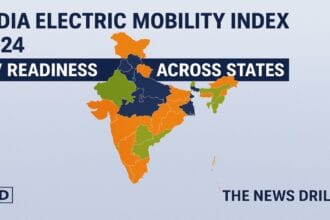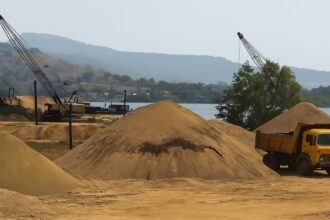
New Delhi – India has announced a groundbreaking discovery of 7.23 million tonnes of rare earth reserves, marking a major milestone in the country’s quest for self reliance in strategic mineral resources. The total value of these reserves is estimated at a staggering $360 billion, placing India rare earth reserves among the most significant globally. This revelation could reshape global supply chains and lessen dependency on countries like China, which currently dominates the rare earth market.
What Are Rare Earth Elements and Why Do They Matter?
Rare earth elements (REEs) are a group of 17 chemically similar elements that are critical to the manufacturing of high-tech electronics, electric vehicles, renewable energy components like wind turbines, and defence technologies. These include neodymium, lanthanum, cerium, and yttrium, among others. The strategic importance of these elements cannot be overstated, especially at a time when the world is accelerating toward green energy and digital technologies.
With India rare earth reserves now officially quantified, the country is poised to play a larger role in the global critical minerals economy.
Where Are India’s Rare Earth Reserves Located?
The newly identified reserves include:
7.23 million tonnes of Rare Earth Elements Oxide (REO) found within 13.15 million tonnes of monazite sands, mainly along the coastal belts of:
- Andhra Pradesh
- Odisha
- Tamil Nadu
- Kerala
- West Bengal
- Maharashtra
- Gujarat
- Jharkhand
Additionally, 1.29 million tonnes of REO have been identified in hard rock deposits located in Gujarat and Rajasthan.
This brings the total estimated India rare earth reserves to 8.52 million tonnes, making it one of the world’s largest unexplored stockpiles.
Government Strategy and Policy Push
To leverage this discovery, the Government of India is executing the National Critical Minerals Mission (NCMM), a ₹16,300 crore initiative aimed at building a self sustained value chain for critical minerals by FY 2030–31. This includes:
- Exploration and processing of REEs
- Development of domestic refining capacities
- Promotion of end use industries (EVs, electronics, defense)
India is also amending the Mines and Minerals (Development and Regulation) Act, 1957 to streamline auctioning processes and enhance private participation in rare earth mining.
Global Relevance: Reducing Dependence on China
Currently, China supplies over 60% of the world’s rare earth elements. By harnessing India rare earth reserves, the country aims to reduce its strategic dependence and become an exporter in this domain.
India has already signed cooperation deals with nations like:
- Australia
- Argentina
- Brazil
- Mozambique
- Peru
Moreover, India is participating in multilateral alliances like the Minerals Security Partnership (MSP), IEA, and IPEF to ensure a secure and diversified global supply chain.
Economic Potential and Industrial Impact
The valuation of $360 billion for India’s rare earth elements opens new frontiers for the Indian economy. Industries that will directly benefit from this include:
- Electric vehicle manufacturing
- Solar and wind energy
- Mobile and chip manufacturing
- Telecommunications
- Aerospace and defense
Additionally, the state owned Khanij Bidesh India Limited (KABIL) has been entrusted with acquiring overseas critical mineral assets and integrating domestic production.
Challenges Ahead
Despite the promise of India rare earth reserves, several challenges remain:
- Environmental concerns: Mining REEs can lead to radioactive by products.
- Technological gaps: India currently lacks advanced refining technology.
- Geopolitical risks: Foreign collaborations need to be strategically balanced.
Yet, the government’s focused approach through NCMM and the recent regulatory reforms indicate a strong will to overcome these barriers.
Recent Developments
In July 2025, rare earth elements were also discovered in the Singrauli coalfields of Madhya Pradesh. Coal India Ltd is currently assessing the feasibility of mining these reserves, potentially adding to the growing list of India rare earth reserves.
Conclusion
The discovery of India rare earth reserves not only boosts the country’s economic prospects but also places it on the global map as a major player in critical mineral supply chains. With strategic planning, international collaborations, and robust domestic policies, India is on track to become self reliant and influential in the world of rare earth elements.
Stay Connected with The News Drill for more updates. Stay informed. Stay updated. Stay Ahead.
Have a tip or insight on India’s rare earth sector? Submit your story at editor@thenewsdrill.com
Contact us: contact@thenewsdrill.com













